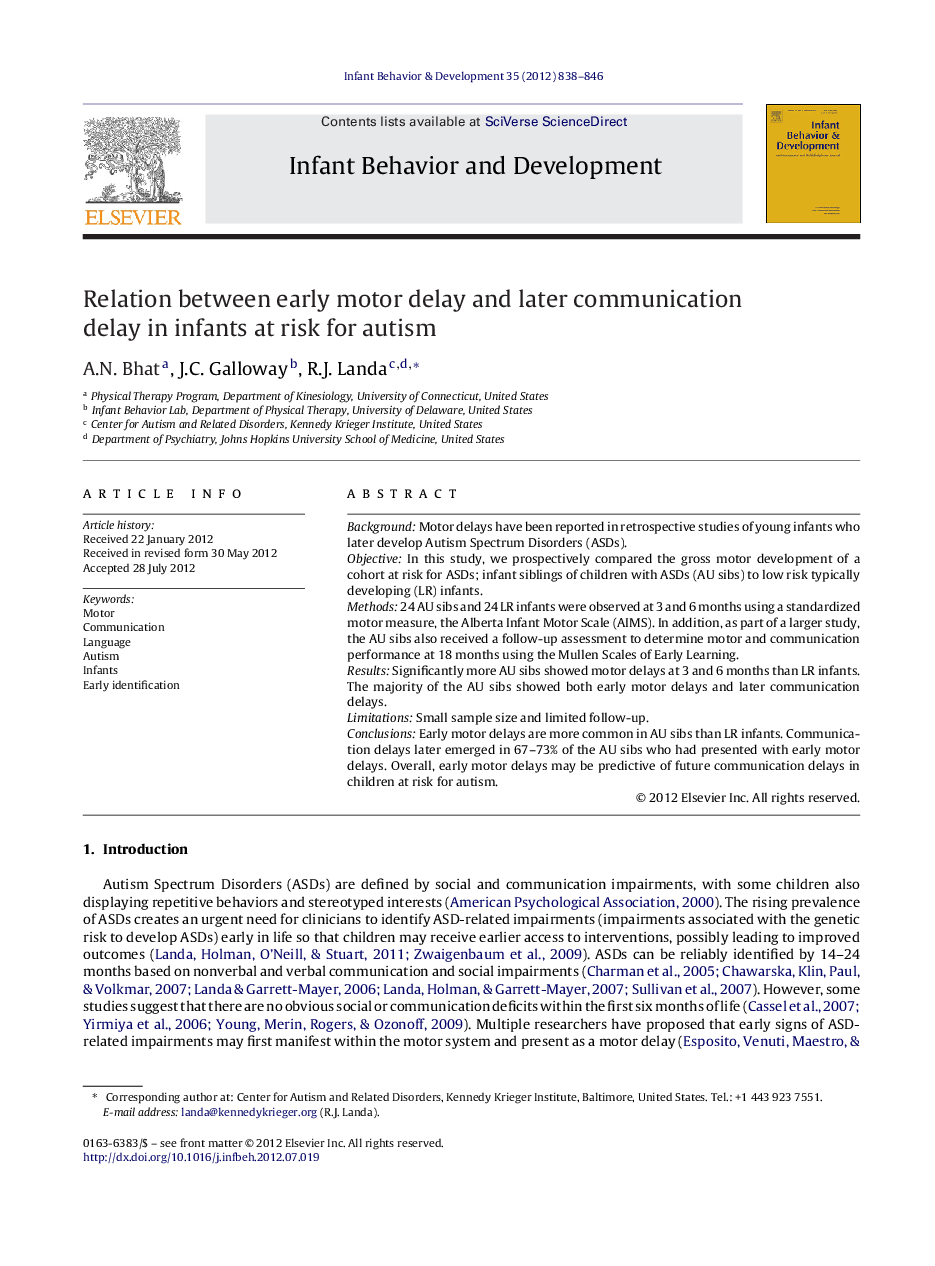| Article ID | Journal | Published Year | Pages | File Type |
|---|---|---|---|---|
| 917372 | Infant Behavior and Development | 2012 | 9 Pages |
BackgroundMotor delays have been reported in retrospective studies of young infants who later develop Autism Spectrum Disorders (ASDs).ObjectiveIn this study, we prospectively compared the gross motor development of a cohort at risk for ASDs; infant siblings of children with ASDs (AU sibs) to low risk typically developing (LR) infants.Methods24 AU sibs and 24 LR infants were observed at 3 and 6 months using a standardized motor measure, the Alberta Infant Motor Scale (AIMS). In addition, as part of a larger study, the AU sibs also received a follow-up assessment to determine motor and communication performance at 18 months using the Mullen Scales of Early Learning.ResultsSignificantly more AU sibs showed motor delays at 3 and 6 months than LR infants. The majority of the AU sibs showed both early motor delays and later communication delays.LimitationsSmall sample size and limited follow-up.ConclusionsEarly motor delays are more common in AU sibs than LR infants. Communication delays later emerged in 67–73% of the AU sibs who had presented with early motor delays. Overall, early motor delays may be predictive of future communication delays in children at risk for autism.
► Motor development of infants at risk for ASDs and low risk infants was compared. ► In the at-risk infants, communication development was also assessed at 18 months. ► At-risk infants showed both early motor and later communication delays. ► Motor delays predict future communication delays in children at risk for autism.
